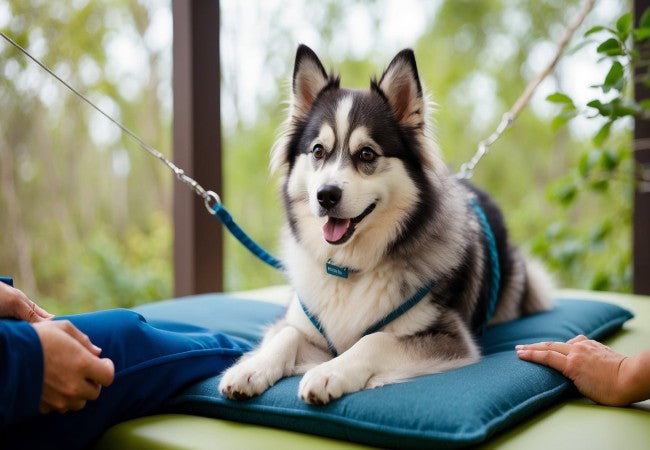Pomsky Guide 2025 – Vet Approved Look at Temperament, Care, Training & Health ✅🐶✨

In this article
Pomsky Guide 2025 – Vet Approved Look at Temperament, Care, Training & Health ✅🐶✨
By Dr. Duncan Houston BVSc
Introduction
The Pomsky is a designer hybrid bred from a Siberian Husky and a Pomeranian, combining alluring husky-like looks with a compact size and lively temperament. Though not recognized as an official breed, Pomskies have surged in popularity since 2012. Their mix of intelligence, energy, and coat variety attracts many—but their traits can be unpredictable.
Origin & Breed Background
Pomskies emerged following a viral Buzzfeed post in 2011, leading breeders to deliberately cross Huskies and Pomeranians. Due to size differences, most Pomskies result from artificial insemination. Several breed associations aim to create standards and encourage responsible breeding.
Physical Characteristics
- Size: Typically 10–15 in tall; weigh 20–30 lb on average, but can range from 15–45 lb
- Coat: Double coat that may be thick and fluffy or medium-length; often looks like a miniature Husky
- Colors: Common colors include black, gray, brown, red, blue, white, and merle
- Eyes: Often striking—blue, brown, or heterochromia common
Temperament & Personality Traits
Pomskies are intelligent, playful, and sociable, yet their behavior can lean toward the Pom side (anxious or territorial) or the Husky side (independent and vocal). They thrive with consistent training and early socialization.
These dogs enjoy family life and adapt well with children if introduced early, but they need engaged, active owners who can match their energy.
Exercise & Enrichment Needs
Pomskies require at least 60–90 minutes daily of structured exercise (walks, play, fetch, hikes) plus mental stimulation like puzzle games or training sessions. Without it, they may develop anxiety or destructive behaviors.
Grooming & Coat Care
- Brushing: Several times per week—daily during heavy shedding
- Bathing: Only when needed—a few times per year
- Ears & Nails: Check ears weekly; trim nails as needed
- Teeth: Brush regularly to prevent dental issues
Coat thickness varies, so grooming schedules depend on the individual. Some may require more maintenance than others.
Nutrition & Feeding Guidelines
Feed a high-quality, breed-appropriate diet. Portion control is essential; treat specialty breeds with weight management in mind. Provide measured meals twice daily, and consider digestive supports like probiotics if GI upset occurs.
Health & Genetic Screening
Lifespan: 12–15 years
- Dental disease: Risk due to small-to-medium size; daily care prevents buildup
- Bloat: Can affect deeper-chested individuals; slow-feed to reduce risk
- Eye conditions: Cataracts or dry eye occasionally seen
- Anxiety-related behaviors: Training can help mitigate stress
Pomskies’ health issues often mirror those of their parents. Annual veterinary checkups with basic screenings are essential.
Training & Behavioral Management
Use positive reinforcement and consistent routines. Early obedience, socialization, and confidence-building help establish stability.
Living Environment & Best Fit
Pomskies adapt to both homes with yards and apartments—provided they get enough exercise. They may overheat in hot weather due to their double coat. Avoid small children without supervision due to unpredictability in size and temperament.
Travel & Lifestyle Tips
Pomskies love road trips and outings. Use secure harnesses or crates for safety. In cold climates, their coat offers natural insulation; warmer weather requires shade and hydration.
Dr Houston’s Pomsky Care Checklist ✅
- 📅 Annual vet exams with dental and eye checks
- 🥣 Measured meals twice daily with potential GI supporting supplements
- 🏃♂️ 60–90 min exercise
- 🪮 Brushing based on coat type—daily for thick coats
- 📱 Use Ask A Vet for dental, allergy, or behavioral support
Conclusion 🌟
The Pomsky is a captivating and energetic companion—ideal for active owners who can meet their exercise, grooming, and training demands. With the proper care, socialization, and enriched lifestyle, these striking designer dogs can thrive and bring years of joy.
Need help managing your Pomsky? Visit AskAVet.com or download the Ask A Vet app for ongoing care and training guidance. 🐾






